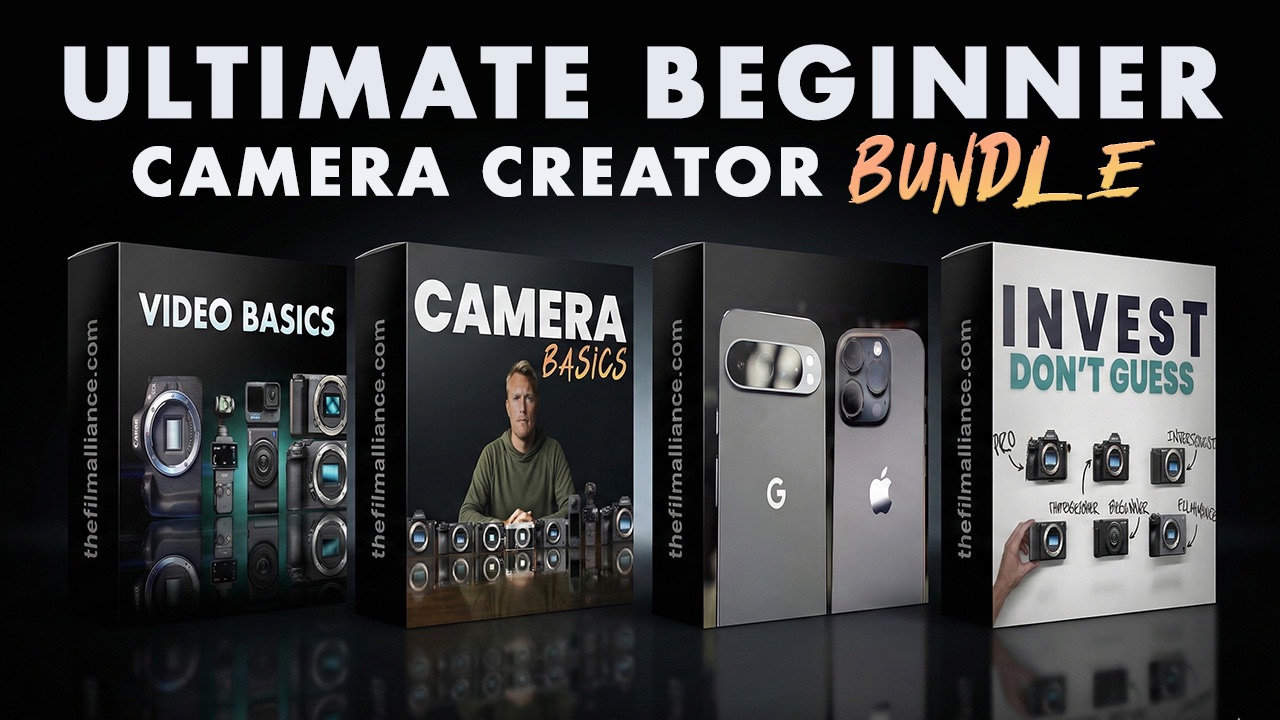
Canon R50 V vs Sony ZV-E10: Which One’s Right for You?
Sep 12, 2025Get the full story watching the video above ⬆️
When comparing the Canon R50 V and the Sony ZV-E10, there were two key things I really wanted to test—skin tonesand low light performance. So I set up a variety of real-world scenes: daylight, low light, night, indoor product shots, green screen setups, and even vlogging scenarios.
These two cameras get compared a lot—and for good reason. They’re both aimed at creators, vloggers, and YouTubers who want solid quality without breaking the bank. But there are subtle differences in how they behave, and that's what I wanted to figure out.
Let’s dive in.
Also here you can find the FREE PROJECT FILES for both cameras so you can dive in and explore for yourself. If you're still on the fence after you read this blog, you can take my free "Which Camera Should I Buy?" quiz
Thanks for being part of the journey. Hit like, drop a comment, and subscribe if you found this helpful—and welcome to The Film Alliance.
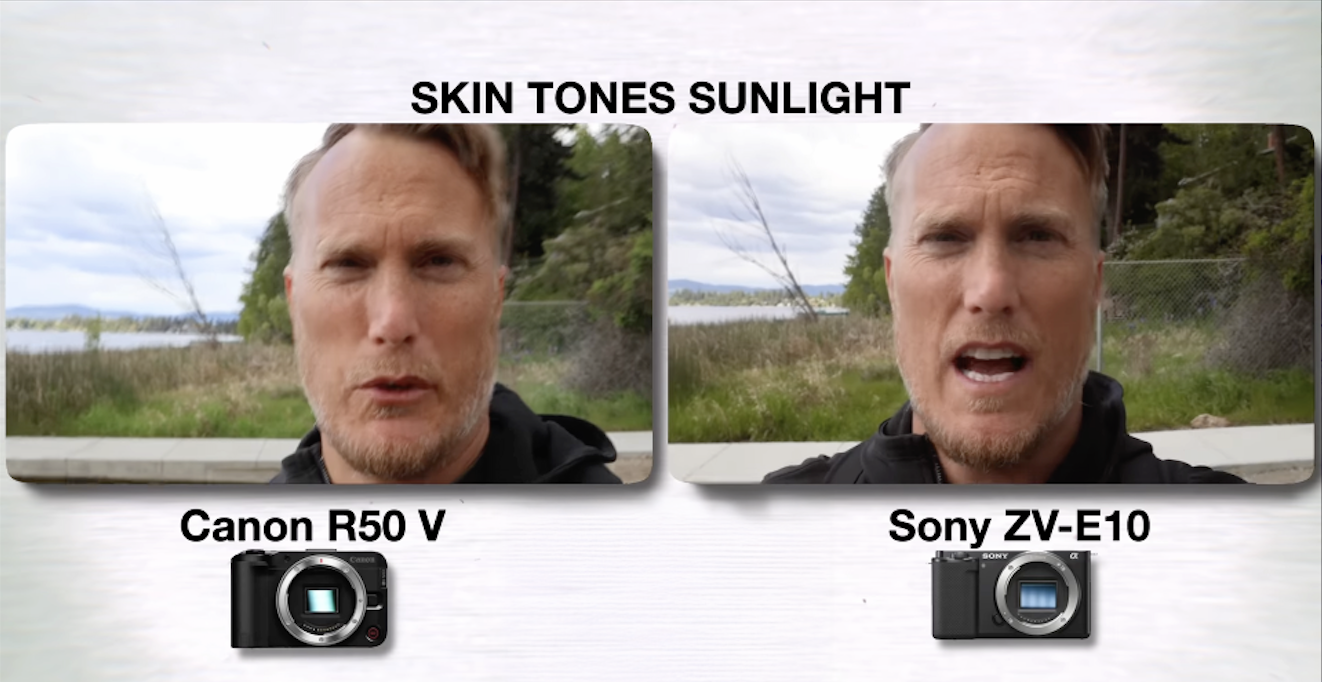
Skin Tones
In program auto exposure, both cameras do a decent job with skin tones, especially outdoors. But if I had to pick, Camera B (Sony ZV-E10) looks slightly more realistic and a touch less saturated. Camera A (Canon R50 V) tends to push the reds a bit more. It’s not something you'd notice unless you compare side-by-side, but that slight saturation bump in the Canon gives it a different feel.
In bright sun, the Canon leans warmer and more saturated. The Sony keeps things a little more neutral—which for me feels more true to life.
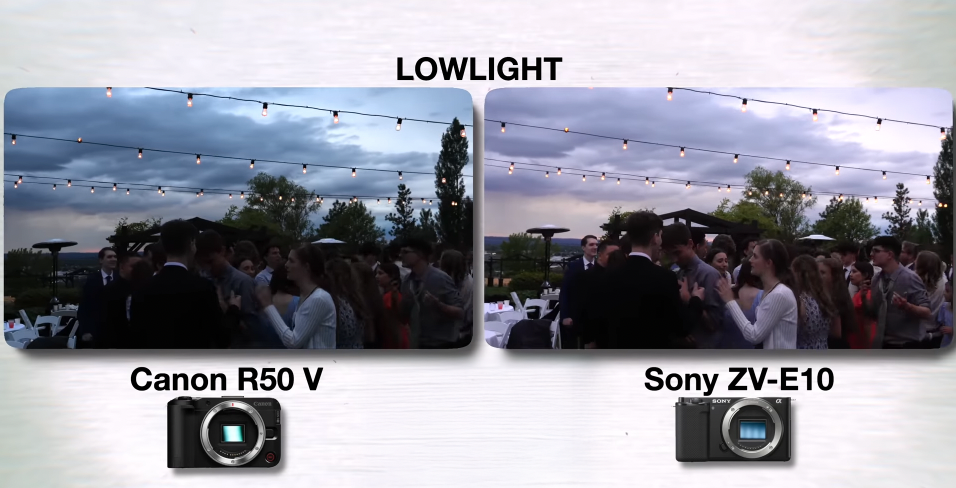
Low Light & ISO Performance
Now here's where things start to shift. In the golden hour and early nighttime shots, the Sony ZV-E10 starts showing its quirks. The white balance leans cool, and the skies start to take on a purple hue. You’ll also notice some autofocus pumping in lower light, especially in dynamic scenes. In contrast, the Canon R50 V does a better job locking focus and keeping auto exposure consistent.
But once we crank the ISO up to 5000 in near-dark environments, Sony takes the lead. Its image holds color better, midtones stay lifted, and it handles noise more gracefully. Canon gets noisier here and loses a bit of clarity.
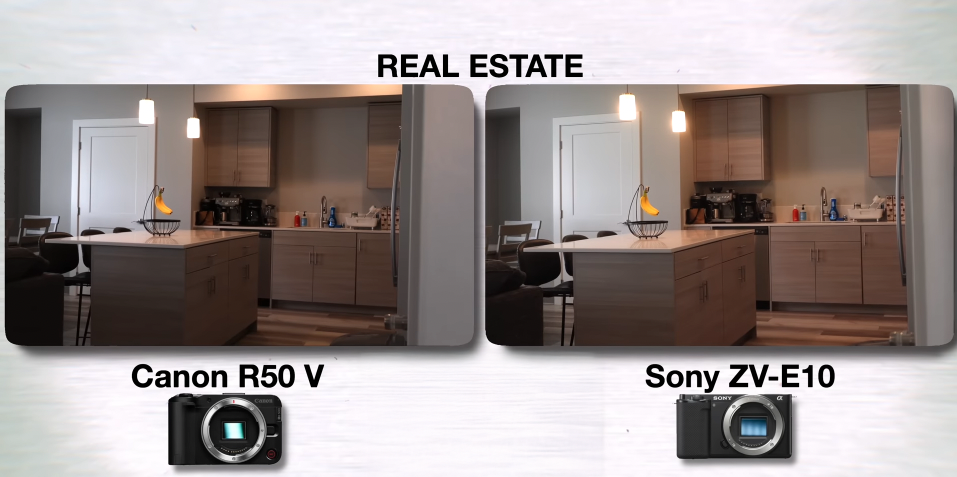
Real Estate & Indoor Scenes
Shooting indoors (like real estate shots), both cameras come close in overall image quality. The biggest difference? The lights over kitchen islands. Canon captured them more accurately, while Sony added a glow or halation effect—likely from its kit lens.
Again, it's not a dealbreaker, but something to keep in mind if you're shooting interiors professionally.

Vlogging & Stabilization
I’ll be honest—neither camera impressed me with stabilization, even when paired with the Sigma 10–18mm f/2.8. These are both marketed as vlogging cameras, but their lack of in-body stabilization really shows.
If you're shooting handheld a lot, you’ll probably want to add a gimbal or stick to wide-angle tripod setups.
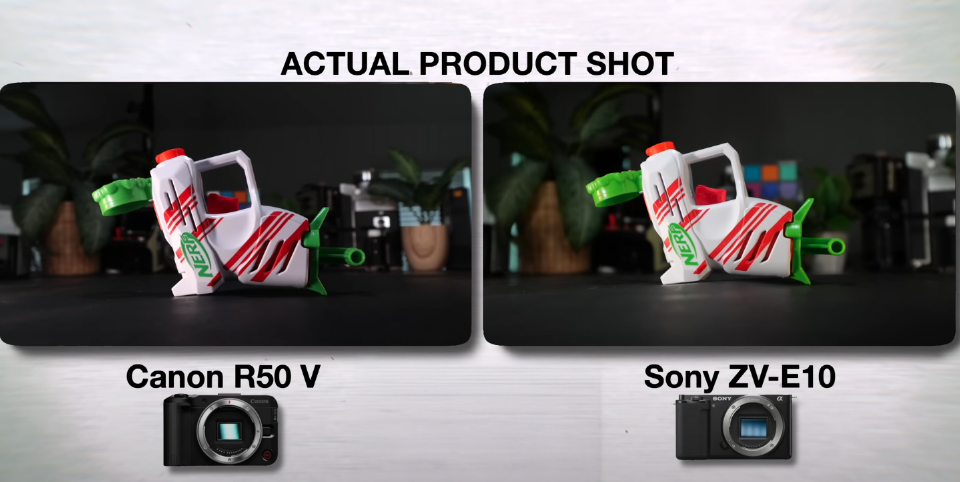
Product Shots & Color Science
In overhead shots, the Sony ZV-E10 gave me better results. Canon's skin tones looked more saturated, which didn’t always work well for product detail.
In a controlled lighting setup, you’ll notice that Sony lifts the midtones just a bit more, while Canon keeps things darker and punchier. It’s a toss-up depending on your style—Sony gives you room to push in post, while Canon looks a bit more baked-in out of camera.
For macro, I preferred the Canon—it felt like it gave me deeper contrast and a more dramatic image.
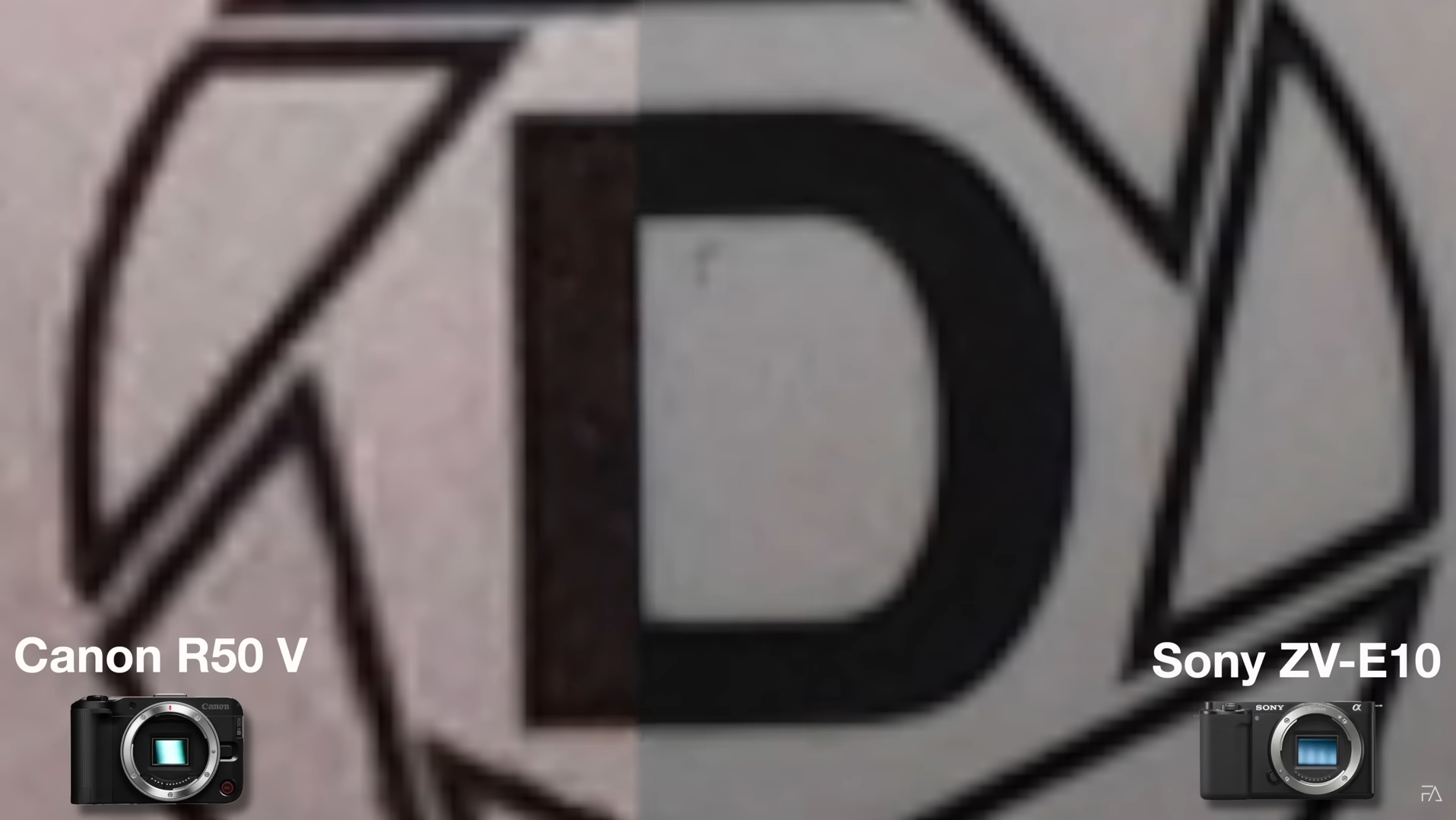
Sharpness & Detail
I zoomed in way more than I should—like 5000%—and Sony had the edge in sharpness. The details held together better, especially in fine textures.
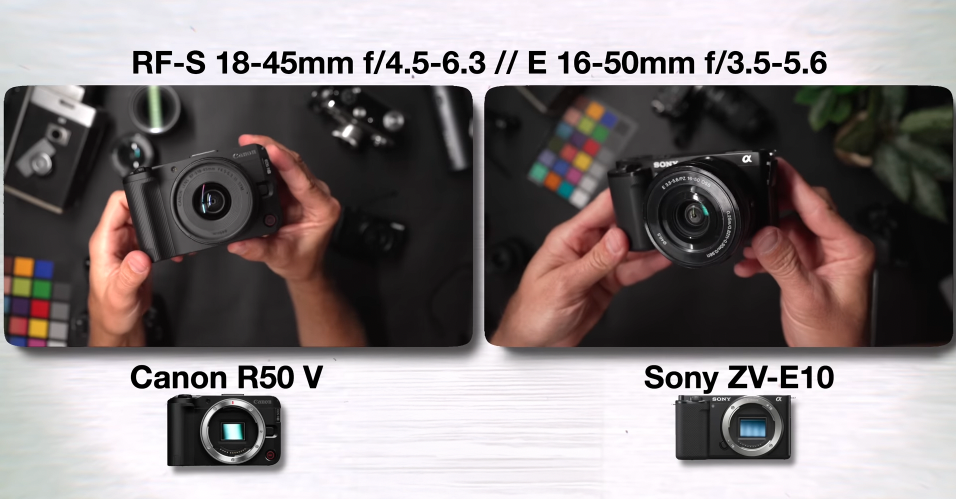
Lens Test
I used each camera’s kit lens (Canon 18–45mm, Sony 16–50mm) and also tested both with the Sigma 10–18mm f/2.8. Sony’s kit lens held more contrast and had more bloom in night shots, while Canon’s was a bit more clinical and muted.
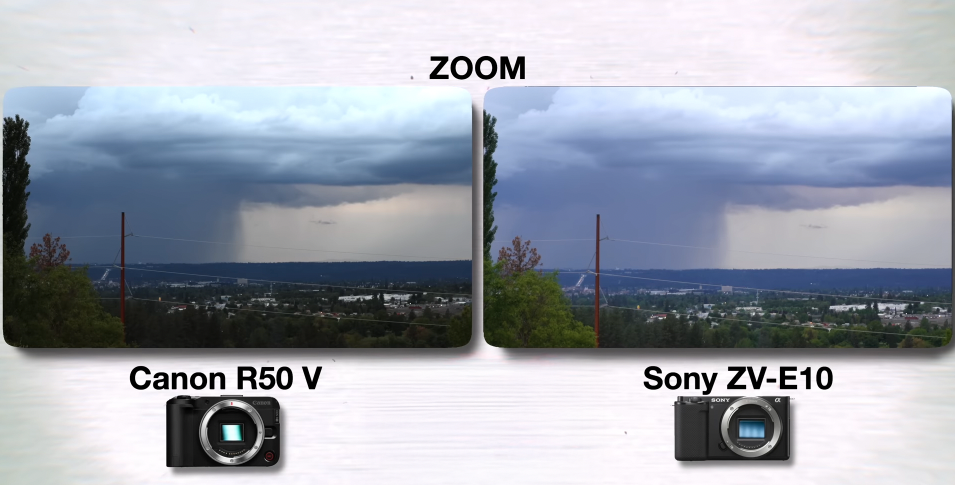
Zoom & Exposure Behavior
In zoom tests, both held up really well. At 0.0 EV, saturation differences started to pop, and as we dropped down to -1.0 and -2.0 exposure, the ZV-E10 leaned into purple skies while the Canon kept things more neutral.
This kind of thing matters if you’re trying to match shots or shoot sunsets consistently.
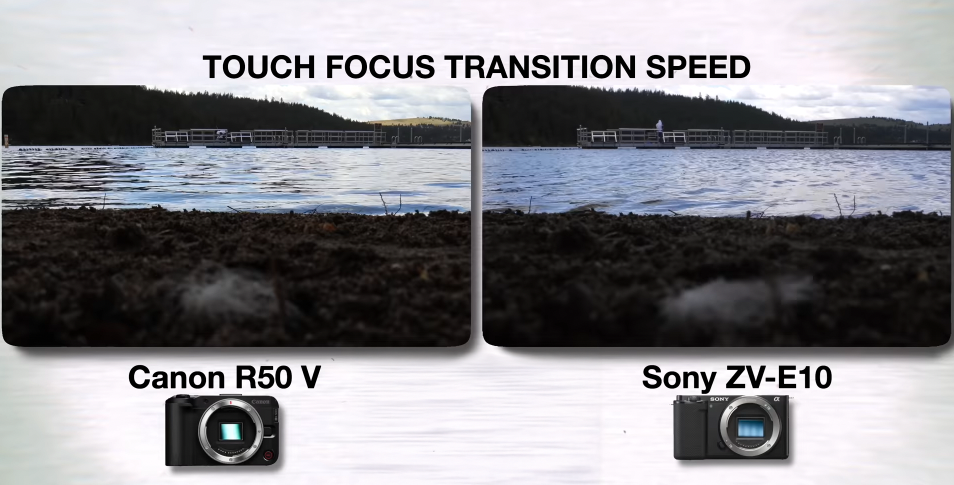
Touch Focus & Autofocus
Sony still wins when it comes to touch focus speed—but Canon is catching up fast. In most static or controlled scenes, both cameras kept things in focus well.
Usability & Handling
- Grip: Sony’s grip is better. It feels more secure and comfortable to hold.
- Ports: Both have mic, headphone, USB-C, micro HDMI. Canon has an extra smaller remote input.
- Battery Life: Roughly equal—about 90 minutes of on/off shooting.
- Card Slot: Both place the SD card next to the battery—annoying if you're on a tripod.
- Playback Interface: Canon wins. Sony’s interface has always been clunky, even after years of using it.
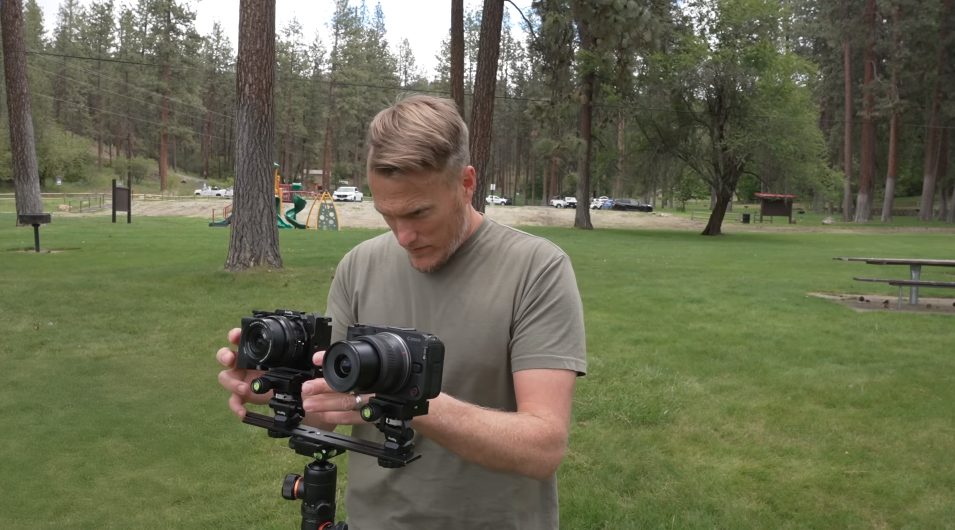
Conclusion
So—Canon R50 V or Sony ZV-E10?
It depends on what you’re looking for:
- Sony ZV-E10 gives you better sharpness, more dynamic range in midtones, slightly better ISO performance, and faster touch focus. It’s more neutral and forgiving in post.
- Canon R50 V offers stronger saturation, cleaner indoor lighting reproduction, and slightly better autofocus stability in low light. It also nails color accuracy in certain interior scenes.
Neither has great stabilization, but both are solid performers for the price. If you’re into more baked-in color with warmer tones, Canon may suit your look. If you want something more flexible and polished, Sony might be your match.


